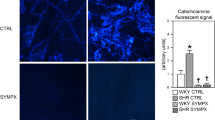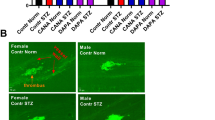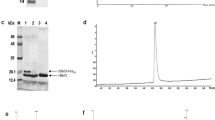Abstract
IN a previous work on the hyperfibrinogenæmic effect of several sympathomimetic amines, it was reported1 that adrenaline, when injected subcutaneously into the rat, has the highest activity in increasing blood plasma fibrinogen. We have now compared the activity of D- and L-adrenaline in relation to the hyperfibrinogenæmic response. After a preliminary experiment to find roughly the relative hyperfibrinogenæmic effect of the two forms of adrenaline, the following experiment was carried out. Forty female albino rats of 150–200 gm. body-weight were divided by randomization into four groups of ten rats each. Two groups received subcutaneously respectively 0.03 and 0.06 mgm. of adrenaline (expressed as base)/100 gm. body-weight. The other two groups were injected respectively with 1 and 2 mgm. of D-adrenaline (base). 24 hr. later, the rats were bled from the aorta under pentobarbitone-sodium anæsthesia (4 mgm./100 gm. body-weight) using syringes coated with ‘Dry Film 9987’, clotting being prevented by the addition of 0.01 ml. of 30 per cent potassium oxalate per ml. of blood; the D- and L-adrenaline were Winthrop Research Products. The fibrinogen was determined by the classical technique of Cullen and Van Slyke, with ashing by the method of Campbell and Hanna2, distillation and titration of ammonia. The results are summarized in Table 1. The relative potency of D-adrenaline as compared to L-adrenaline was calculated by standard statistical methods for a four-point assay. Our results indicate that the dextro-compound has 2.8 per cent of the activity of the lævo-compound, with the exact fiducial limits of 1.8 and 5.9 per cent. This potency ratio of 1 : 36, obtained for the hyperfibrinogenæmic effect of the dextro-compound in relation to the lævo-compound, is lower than the ratio 1 : 20 obtained by Tainter3 for the pressor response in the cat. It is, however, comparable to the 1 : 30 to 1 : 40 ratio found by Fromherz4 for the pressor response in dogs.
This is a preview of subscription content, access via your institution
Access options
Subscribe to this journal
Receive 51 print issues and online access
$199.00 per year
only $3.90 per issue
Buy this article
- Purchase on Springer Link
- Instant access to full article PDF
Prices may be subject to local taxes which are calculated during checkout
Similar content being viewed by others
References
Henriques, S. B., Henriques, O. B., and Levy, A., Brit. J. Pharmacol. (in the press).
Campbell, W. R., and Hanna, M. I., J. Biol. Chem., 119, 1 (1937).
Tainter, M. L., J. Pharmacol., 40, 43 (1930).
Fromherz, K., Deut. med. Woch., 49, 814 (1923).
Author information
Authors and Affiliations
Rights and permissions
About this article
Cite this article
MANDELBAUM, F., HENRIQUES, O. & HENRIQUES, S. Comparative hyperfibrinogenæmic Action of D- and L-Adrenaline. Nature 178, 363–364 (1956). https://doi.org/10.1038/178363b0
Issue Date:
DOI: https://doi.org/10.1038/178363b0
Comments
By submitting a comment you agree to abide by our Terms and Community Guidelines. If you find something abusive or that does not comply with our terms or guidelines please flag it as inappropriate.



